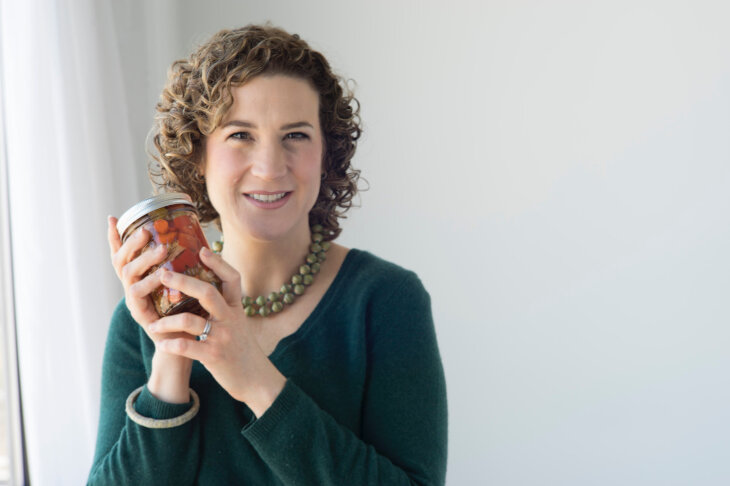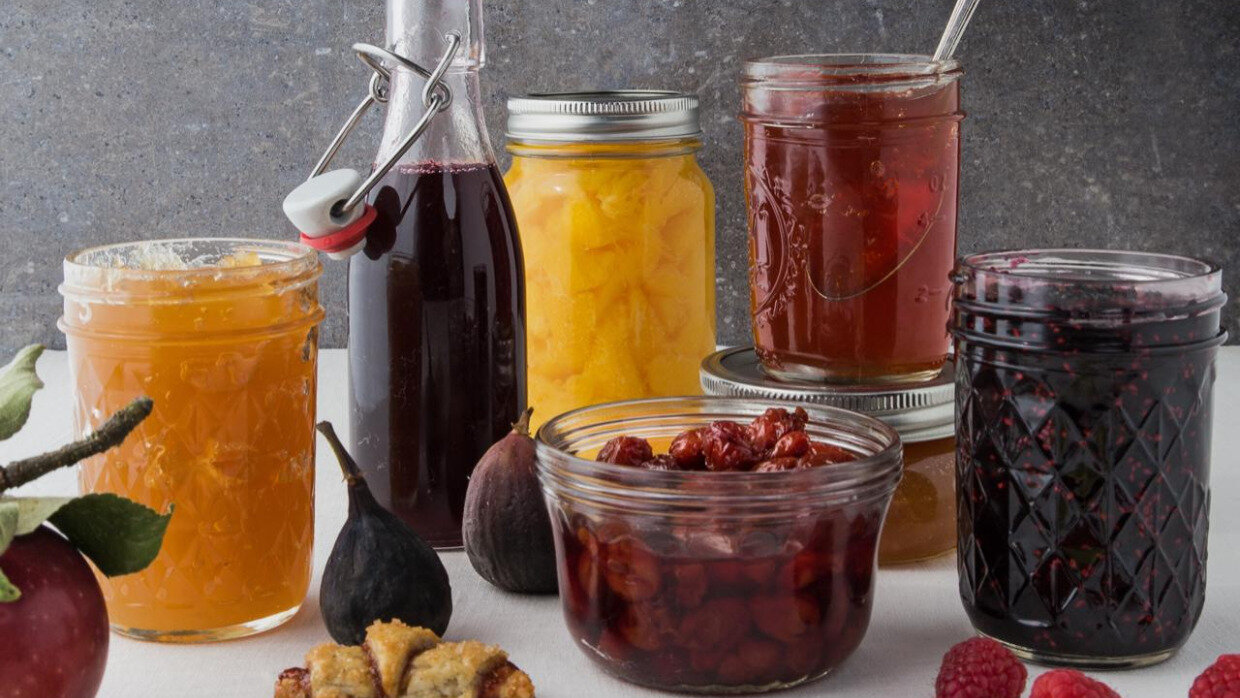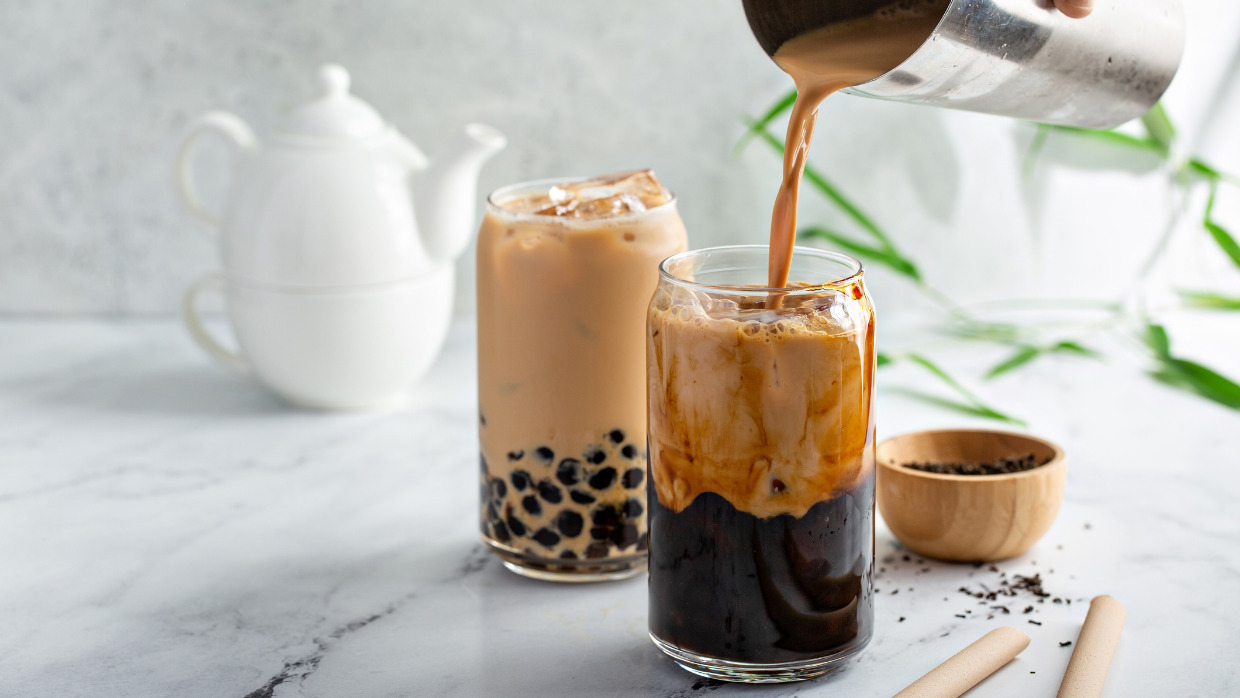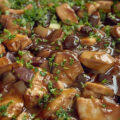Gug, as we called my Polish-born bubbe, always put jam in her tea. As a child growing up in South Africa, where tea is served with cold milk, I just figured she was different, like her foreign accented English.
The next time I saw jam being stirred into black tea was in 1991, on a sleeper train traveling between Moscow and St Petersburg after the Iron Curtain was lifted.
Other Eastern European customs I had noticed when growing up also fell into place. Large, soft down pillows, potatoes slathered with smetana (sour cream) and samovar’s dispensing black tea into tall glasses with silver filigree holders.
The importance of fruit preserves in Jewish cuisine

Emily Paster, author of The Joys of Jewish Preserving: Modern Recipes with Traditional Roots, for Jams, Pickles, Fruit Butters, and More – for Holidays and Every Day, confirms that jam and fruit in general has an “outsized importance” in Jewish cuisine.
This stems in part, she tells Jewlish.com, from Kashrut laws. “Before the modern invention of Crisco and dairy-free margarine, the prohibition on mixing meat and dairy significantly limited the kind of sweets that Jews could serve after a meat meal and made fruit, whether fresh or preserved, the typical after-meal treat.”
Luckily, shtetls were located in rural areas so that nearby orchards and forests had an abundance of fruit for picking in the summer months. Apples, pears, plums, cherries, gooseberries, currants, and raspberries were then dehydrated or turned into jam, syrups, pastes and fruit butters.
Preserved fruit was especially important for the winter months. “They were in fact needed for survival in the harsh Eastern European climate,” says the Author.
Paster, whose father’s family comes from Krakow, Poland, believes that although there was no knowledge of vitamins as such, they did know that red currants, for example, had medicinal properties. “This was a time when people had the notion of humors and believed that red food would be beneficial to the blood. In the shtetl, currant and berry syrups were often administered as tonics to the sick and weak. Interestingly, one of the first symptoms of scurvy, or vitamin C deficiency, is fatigue, so it is possible that the sick who were given these syrups were cured of what ailed them.”
A jam we could imagine our family eating in the shtetl is the recipe for Polish Strawberry Rhubarb jam included in the book. As it has a runny consistency it’s suggested to be used as a topping for blintzes for the holiday of Shavuot, which often falls during late spring when strawberries and rhubarb are at their peak.
“Rhubarb is a favorite among Eastern Europeans, and it finds its way into everything from beverages and soups to compotes and desserts. It is tart and so is usually combined with other fruit,” Paster explains.
One of Paster’s most interesting discoveries during the research for her comprehensive book pertains to the etrog. She found that as this ceremonial fruit obtained for the Sukkot holiday was expensive and hard to come by, it was not just thrown away but made into a type of marmalade jam. This was eaten a few months later on the holiday of Tu Bishvat.
As etrogs are too full of pesticides these days, in the quest to get them as perfect as possible, Paster has substituted it with an organic lemon in her recipe for lemon and walnut eingemacht (German for preserve).
To show the importance of preserves in the Jewish kitchen one only has to look at iconic foods, she points out. Rugelach are traditionally filled with apricot jam, latkes are topped with applesauce, blintzes are filled with jam and plum butter (lechva) is a traditional filling for cookies and hamantaschen.
The Sephardic Kitchen
Jams and fruit preserves are not only prominent in Ashkenazi Jewish cuisine. Paster also includes recipes from the Sephardic Jewish cuisine, which she became acquainted with when she spent a year in France as a student and was “lucky” to live with the Zémors, an Algerian Jewish family.
One of the traditions in the Sephardic home is to make spoon sweets. These are a piece of preserved fruit (rose petals, quince, orange, apricot, date, and fig are favorites) placed in a spoon and served to guests in an elaborate ceremony using crystal bowls on silver trays, silver spoons, and glasses of ice water. Paster says, these same preserves were also brought out on happy occasions, including the New Year, “as a way to surround the celebrants with sweetness.”
Inspiring Jewish cooks to preserve

Paster, began her own preserving inspired by the bounty of her local farmers market in Michigan and a desire to eat more locally and seasonally. Her hobby really took off after it occurred to her that making jam was a way she could do something in the kitchen with her daughter, who had allergies to dairy, wheat and eggs.
In time, besides the traditional preserves, Paster began to be inventive. This is seen in her take on Jewish traditional ingredients in recipes for Apricot Poppy Seed jam and Apple Honey Rosewater jam.
“I was inspired by something in keeping with tradition but pleasing to the modern palate. I would like Jewish cooks to be inspired too.”
I am sure my Polish bubbe would approve.

















